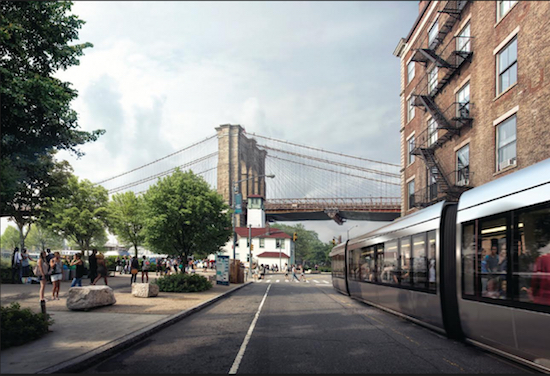Poll reveals enormous support for Brooklyn-Queens Connector streetcar
Average of 73.4 Percent Approve of the BQX

The BQX passes through DUMBO. Rendering courtesy of Friends of the BQX
The people have spoken!
A poll released on Thursday, which surveyed residents in seven City Council districts along the proposed route of the Brooklyn-Queens Connector (BQX) streetcar, revealed overwhelming support of the BQX.

Brooklyn Boro
View MoreNew York City’s most populous borough, Brooklyn, is home to nearly 2.6 million residents. If Brooklyn were an independent city it would be the fourth largest city in the United States. While Brooklyn has become the epitome of ‘cool and hip’ in recent years, for those that were born here, raised families here and improved communities over the years, Brooklyn has never been ‘uncool’.